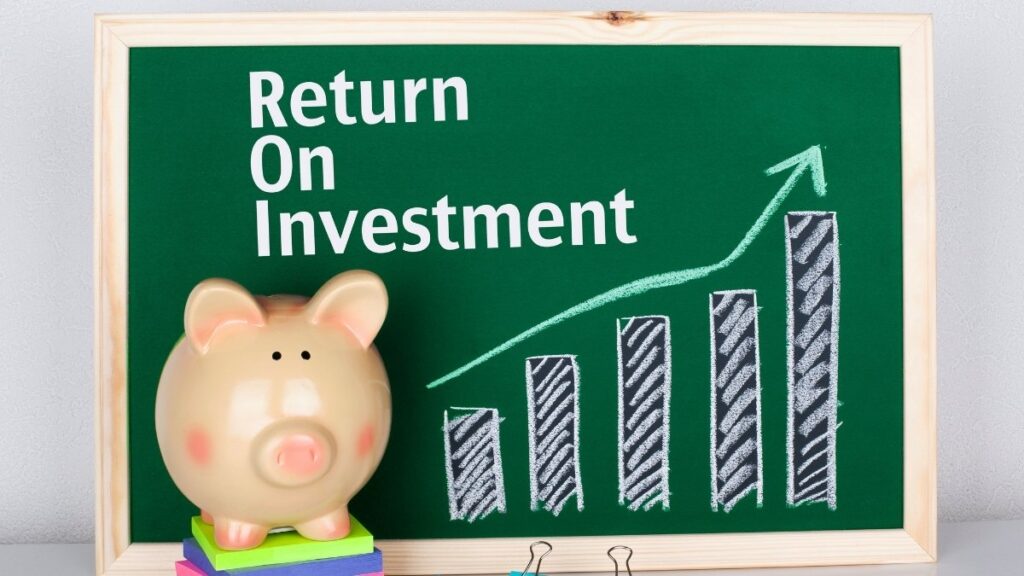
In 2025, only 33% of actively managed funds beat their index counterparts—a staggering failure rate that proves most professional money managers can’t justify their fees.
Even amid market volatility from elections and tariffs, active managers struggled mightily to outperform simple index funds, according to Morningstar’s latest findings.
Meanwhile, you’re working hard and saving diligently, but your investment returns remain disappointing. Your financial advisor charges 1-2% annually, yet your portfolio barely keeps pace with inflation, while you hear stories of everyday people building substantial wealth with shockingly simple strategies.
SECTION 1: Why 90% of Financial Advisors Can’t Beat a Simple Computer Program
Your financial advisor charges you thousands of dollars each year. They promise to beat the market. They talk about their expertise and special strategies. But here’s what they don’t want you to know: Most of them fail miserably.

Information Point: According to Morningstar’s 2025 data, only 14% of actively managed funds beat the S&P 500 over 10 years. This means 86% of professional money managers with decades of experience and teams of analysts lose to a simple computer program that buys everything.
The numbers get worse when you look longer. Over 15 years, only 8% of active funds beat their benchmark. Over 20 years? Just 5%. Your expensive advisor has a 95% chance of losing to a basic index fund that costs almost nothing.
Idea Point: Think about this like hiring a basketball coach. If 95% of coaches made their teams worse, you’d fire them all and let the players coach themselves. That’s exactly what’s happening with money management.
Warren Buffett proved this with his famous bet. He picked a simple S&P 500 index fund to compete against five hedge funds chosen by experts. After 10 years, the index fund returned 85.4%. The hedge funds averaged just 22%. The “dumb” computer program crushed the smartest money managers on Wall Street.
Information Point: The math behind fees destroys your wealth. A 1% annual fee might sound small, but it steals 25% of your wealth over 30 years. If you had $100,000 growing at 7% annually, you’d have $761,000 after 30 years. With a 1% fee, you’d have only $574,000. That’s $187,000 stolen by fees.
Here’s why this happens. Active fund managers try to be clever. They buy and sell constantly. They chase hot stocks. They panic during crashes. They get overconfident during booms. All of this trading costs money and creates taxes. Meanwhile, the simple index fund just sits there, owning everything, costing almost nothing.
Idea Point: It’s like comparing a calm, steady driver to someone who speeds up, slams the brakes, and changes lanes constantly. The steady driver gets better gas mileage and arrives safely. The crazy driver burns more fuel and crashes more often.
SECTION 2: The 20-Minute Setup That Works Better Than Years of Research
Most people think investing requires hours of research, complex analysis, and constant monitoring. They’re wrong. The best investment strategy takes 20 minutes to set up and 20 minutes per year to maintain.

Information Point: This isn’t lazy investing. It’s smart investing. Nobel Prize winners Eugene Fama and William Sharpe proved that market efficiency makes active management largely pointless. You’re not being careless; you’re being scientific.
Here’s your three-step system:
Step 1: Open a Low-Cost Account (10 minutes) Go to Vanguard, Fidelity, or Schwab’s website. These companies offer the cheapest index funds. Don’t overthink this choice. All three are excellent. Vanguard invented index funds. Fidelity offers some funds with zero fees. Schwab has great customer service. Pick one and move on.
Idea Point: This is like choosing between three great restaurants. They’re all good. The worst mistake is staying hungry while you decide.
Step 2: Choose Your Mix (5 minutes) You need just two things: stocks and bonds. Stocks grow your money long-term but bounce around short-term. Bonds provide steady income and stability. Your age determines your mix.
If you’re 25 years old, put 80% in stocks and 20% in bonds. If you’re 45, use 60% stocks and 40% bonds. The simple rule: your bond percentage should roughly equal your age. A 35-year-old might use 35% bonds and 65% stocks.
Information Point: Research from Vanguard shows this simple two-fund approach beats complex portfolios with 20+ holdings. More funds don’t mean better results. They usually mean higher costs and more confusion.
Step 3: Automate Everything (5 minutes) Set up automatic monthly investments from your checking account. Start with whatever you can afford. Even $50 per month builds wealth over time. Enable automatic dividend reinvestment. This means any money your funds earn gets immediately reinvested to buy more shares.
Idea Point: Automation removes your emotions from investing. You can’t panic sell if the money moves automatically. You can’t skip months when you feel pessimistic. The computer forces you to do the right thing even when you don’t feel like it.
Information Point: Dollar-cost averaging through automation means you buy more shares when prices are low and fewer when prices are high. This natural averaging effect improves your returns over time without any effort from you.
SECTION 3: The Math That Makes Millionaires
Compound growth is the most powerful force in finance. Albert Einstein supposedly called it the eighth wonder of the world. Here’s why small amounts of money become huge fortunes when you give them time.

Information Point: The S&P 500 has averaged about 10% annual returns over the past 90+ years. This includes the Great Depression, multiple recessions, wars, and market crashes. Despite all the bad news, patient investors got rich.
Let’s use realistic math. Assume 8% annual returns after inflation. This is conservative compared to historical averages. If you invest $500 per month starting at age 25, you’ll have $1.2 million by age 65. If you wait until 35 to start, you’ll have just $550,000. Those 10 years cost you $650,000.
Idea Point: Time is more powerful than money in investing. A 25-year-old who invests $2,000 per year for just 10 years and then stops will have more money at retirement than someone who starts at 35 and invests $2,000 per year for 30 years.
But fees destroy this magic. Let’s compare two investors who each contribute $500 monthly for 30 years. Investor A pays 1% in fees annually. Investor B pays 0.05% in fees (typical for index funds).
Investor A ends up with $678,000. Investor B ends up with $820,000. The high fees cost Investor A $142,000. That’s nearly three years of contributions stolen by fees.
Information Point: Every 1% in annual fees roughly equals 10-15 years less retirement income. A 2% fee means you’ll work an extra 20-30 years to achieve the same wealth as someone paying 0.05%.
This is why simple beats complex. Complex investments charge higher fees. They require more trading, which creates taxes. They tempt you to tinker and make emotional decisions. Simple index funds avoid all these wealth destroyers.
Idea Point: Investing is like growing a garden. You plant seeds, water them regularly, and let time do the work. The investors who constantly dig up their plants to check the roots kill their garden. The patient gardeners who leave their plants alone get the harvest.
SECTION 4: Building Your Hands-Off Money Machine
Setting up your automated investment system is easier than ordering pizza online. But unlike pizza, this feeds your future self for decades.

Information Point: The best brokerages offer $0 account minimums, commission-free trading, and rock-bottom expense ratios. This wasn’t true 20 years ago when investing was expensive and complex. Today, you can start with pocket change.
Choosing Your Brokerage Vanguard: They invented index funds and still offer the lowest costs on many funds. Their Total Stock Market Index Fund (VTI) charges just 0.03% annually.
Fidelity: Offers several funds with zero expense ratios. Their FZROX (Total Market) and FZILX (International) cost literally nothing.
Schwab: Great customer service and user-friendly website. Their S&P 500 fund (SWPPX) charges 0.02% annually.
Idea Point: Don’t spend weeks comparing every detail. All three companies are excellent. The cost of delay (missing months of potential growth) exceeds any small difference between them.
Selecting Your Funds For most people, you need just two funds:
- A total stock market fund (for growth)
- A total bond market fund (for stability)
At Vanguard: VTI (stocks) + BND (bonds) At Fidelity: FZROX (stocks) + FXNAX (bonds)
At Schwab: SWTSX (stocks) + SWAGX (bonds)
Information Point: These “total market” funds own thousands of companies automatically. When you buy VTI, you own tiny pieces of Apple, Microsoft, Amazon, and 3,000+ other companies. You get instant diversification without picking individual stocks.
Setting Up Automation Link your checking account to your brokerage account. Most brokerages verify this with small test deposits that take 2-3 days.
Choose your monthly investment amount. Start small if you’re nervous. You can always increase it later.
Set up automatic investments. Pick the same date each month (like the 15th) so your money moves predictably.
Enable dividend reinvestment. This automatically buys more shares with any dividends your funds pay.
Idea Point: Automation removes the decision fatigue that kills most investment plans. When everything happens automatically, you can’t sabotage yourself with bad timing or emotional decisions.
Information Point: Studies show investors who check their accounts daily earn 2-3% less per year than those who check monthly or quarterly. Automation helps you ignore the daily noise and focus on long-term growth.
SECTION 5: Why Your Brain Is Your Portfolio’s Worst Enemy
Your brain evolved to keep you alive on dangerous savannas. It’s terrible at making investment decisions. Understanding this can save you from expensive mistakes.

Information Point: Studies show overconfident investors who trade most frequently underperform by 6.5% annually compared to those who trade least. The most active traders are usually men who think they’re smarter than the market. They’re wrong.
Fear and greed drive most investment decisions. When markets crash, fear tells you to sell everything before you lose more money. When markets boom, greed tells you to buy more before you miss out. Both emotions destroy wealth.
Idea Point: Imagine you’re driving in fog. Fear makes you slam the brakes and pull over, missing your destination. Greed makes you speed up and crash. The smart driver maintains steady speed and trusts their navigation system.
The COVID-19 crash in March 2020 proves this point perfectly. Markets fell 34% in five weeks. Investors panicked and sold everything. News headlines screamed about economic collapse. But markets recovered completely within six months and reached new highs by year-end.
Investors who panic-sold in March locked in huge losses. Those who stayed invested or even bought more during the crash made excellent returns. The difference wasn’t intelligence or special knowledge. It was emotional control.
Information Point: The average investor earned just 2.9% annually over the 20 years ending in 2019, while the S&P 500 earned 6.1%. This “behavior gap” exists because people buy high when they feel optimistic and sell low when they feel scared.
Bear markets (when stocks fall 20%+ from recent highs) happen regularly. The average bear market lasts 15 months and sees 38% declines. But the average bull market lasts 6 years with 210% gains. Math clearly favors staying invested.
Idea Point: It’s like weather versus climate. Storms are scary but temporary. Climate trends determine long-term conditions. Daily market movements are weather. Long-term growth trends are climate.
This is why automation works so well. When your investments happen automatically, emotions can’t hijack your decisions. You buy shares every month regardless of whether markets are up or down. This mechanical approach beats human emotions every time.
Information Point: Research from Dalbar shows that the average equity fund investor earned 4.25% annually over the past 20 years while the funds themselves earned 6.07%. The difference? Investors jumped in and out at the wrong times based on emotions rather than staying put.
SECTION 6: What Returns Can You Really Expect?
Forget the get-rich-quick promises. Real wealth building requires realistic expectations based on historical data.

Information Point: The S&P 500 has averaged about 10% annually since 1926. But this includes huge variations: some years up 30%, others down 30%. The key is thinking in decades, not days.
A balanced 60% stock, 40% bond portfolio has averaged around 8-9% annually with less volatility than 100% stocks. This “60/40” allocation became popular because it provided good growth with manageable risk.
In 2025, this classic mix has performed well despite predictions of its death. When stocks fell in early 2022, bonds provided some cushion. When stocks recovered, the portfolio participated in most of the gains.
Idea Point: Think of 60/40 like a car with both a powerful engine and good brakes. Pure stock portfolios are like race cars – faster in good conditions but more likely to crash. Pure bond portfolios are like tractors – safe but slow.
Here’s realistic math for different time periods:
1 Year: Anything can happen. You might gain 30% or lose 20%. Don’t invest money you need within one year.
10 Years: Very likely to be positive. Historically, there have been no 10-year periods where a diversified portfolio lost money.
30 Years: Almost guaranteed to build significant wealth if you contribute regularly.
Information Point: A person investing $500 monthly for 30 years at 8% annual returns would accumulate about $679,000. At $1,000 monthly, that becomes $1.36 million. These aren’t fantasy numbers – they’re based on historical averages.
But you won’t get 8% every year. Some years you’ll make 25%. Others you’ll lose 15%. The average works out over long periods, but the path isn’t smooth.
Idea Point: It’s like a staircase viewed from the side versus head-on. From the side, you see steady upward progress. Head-on, you see lots of up-and-down steps. Both views show the same staircase, but the perspective changes how it looks.
Don’t expect to get rich quick. Do expect to get rich slowly and surely if you stick with the plan. Time and consistency beat cleverness and complexity.
Information Point: Even modest amounts grow substantially over time. $100 monthly for 40 years at 8% returns becomes $280,000. That’s contributing just $48,000 over four decades but ending up with nearly $300,000 due to compound growth.
SECTION 7: The 7 Deadly Mistakes That Kill Investment Returns
Even simple strategies can be ruined by common mistakes. Avoiding these errors is as important as picking good investments.

Mistake 1: Trying to Time the Market Missing just the 10 best days over 20 years cuts your returns in half. Since you can’t predict which days will be best, you must stay invested always. Market timing feels smart but destroys wealth.
Information Point: From 2000-2020, staying invested in the S&P 500 earned 6.1% annually. Missing the 10 best days dropped returns to 2.4%. Missing the 30 best days made returns negative.
Mistake 2: Chasing Hot Investments Last year’s best-performing fund usually becomes this year’s disappointment. Hot stocks that everyone’s talking about have already had their big gains. You’re buying after the party’s over.
Idea Point: It’s like buying winter coats in February. They were popular when you needed them, but now spring is coming and demand is falling.
Mistake 3: Paying Unnecessary Fees A 1% fee sounds small but costs huge amounts over time. Always check expense ratios. Never pay more than 0.5% for any fund. Most index funds charge under 0.1%.
Information Point: On a $100,000 investment over 30 years, the difference between 0.05% and 1% fees is about $84,000. That’s nearly double the initial investment stolen by fees.
Mistake 4: Over-Diversifying Owning 50 different funds doesn’t reduce risk more than owning 2-3 broad index funds. It just increases costs and complexity. A total stock market fund already owns thousands of companies.
Mistake 5: Panic Selling During Crashes Every crash feels like “this time is different” and “the world is ending.” It never is. Markets have recovered from every crash in history, usually faster than expected.
Idea Point: Crashes are like forest fires – scary while happening but necessary for healthy long-term growth. New growth emerges from the ashes stronger than before.
Mistake 6: Ignoring Tax-Advantaged Accounts Always max out your 401(k) match first. Then fund IRAs. Only use taxable accounts after maximizing tax-sheltered options. Taxes significantly reduce investment returns.
Information Point: A $5,000 IRA contribution might save you $1,000+ in taxes depending on your bracket. That’s an instant 20%+ return before any investment gains.
Mistake 7: Never Rebalancing If your target is 60% stocks/40% bonds, stick to it. When stocks do well, they’ll become a larger percentage. Sell some stock funds and buy bond funds to get back to 60/40. Do this once per year.
Idea Point: Rebalancing forces you to sell high (overperforming assets) and buy low (underperforming assets). It’s a mechanical way to do what everyone says but few people actually do.
SECTION 8: Your 20-Minute Action Plan
Stop reading about investing and start doing it. This checklist takes 20 minutes now and creates wealth for decades.

This Week (20 minutes total):
□ Choose your brokerage: Vanguard, Fidelity, or Schwab □ Open an account online (10 minutes) □ Link your checking account (2 minutes) □ Choose your target allocation based on age (2 minutes) □ Set up automatic monthly investment (5 minutes) □ Enable dividend reinvestment (1 minute)
Information Point: Don’t wait for the “perfect” time to start. Market timing is impossible, but time in the market is everything. Every month you delay costs potential gains.
This Month:
□ Maximize 401(k) employer match first (free money) □ Open and fund IRA after getting full match □ Increase automatic investment if possible □ Set calendar reminder for annual rebalancing
Idea Point: Treat your investment contributions like a bill that must be paid. You wouldn’t skip your rent payment, so don’t skip your future self’s payment either.
This Year (20 minutes annual maintenance):
□ Review allocation in December □ Rebalance if any asset class is 5%+ off target □ Adjust contribution amount if income changed □ Increase contributions with any raises or bonuses
Information Point: Annual rebalancing is enough. More frequent rebalancing doesn’t improve returns but increases transaction costs and taxes in taxable accounts.
Monthly Monitoring (5 minutes):
□ Check account balance (optional – less is often more) □ Confirm automatic investments processed □ Resist urge to make changes based on news
Long-term Milestones:
□ Age 30: Should have 1x annual salary invested □ Age 35: Should have 2x annual salary invested
□ Age 40: Should have 3x annual salary invested □ Age 50: Should have 5x annual salary invested □ Age 60: Should have 8x annual salary invested
Idea Point: These milestones aren’t rules, they’re guideposts. Don’t stress if you’re behind – just start now and contribute consistently. Late starters who save aggressively can catch up.
Information Point: Every $100 you invest in your 20s becomes about $3,200 by retirement age 65 (assuming 8% returns). Every $100 you invest in your 40s becomes about $800. Starting early provides a massive advantage.
The most important step is the first one. Open an account this week. You can always adjust details later, but you can’t get back lost time.
CONCLUSION
The 20-minute investment strategy isn’t magic. It’s math, psychology, and decades of data working together. When 86% of professional money managers can’t beat simple index funds, complexity becomes your enemy, not your friend.
Your advantage isn’t sophisticated analysis or perfect timing. It’s the discipline to stay invested while others panic. It’s the wisdom to keep costs low while others overpay for false promises. It’s the patience to let compound growth work its magic over decades.
Information Point: This strategy has created more millionaires than any other investment approach. Not because it’s exciting or clever, but because it’s reliable and sustainable.
Stop overthinking. Stop overpaying advisors. Stop waiting for the perfect moment. Take 20 minutes this week to set up your automated index fund portfolio. Start small if you must, but start now.
The passive index fund investing strategy isn’t about getting rich quick. It’s about getting rich for certain. Your future self is counting on the decision you make today.
Final Idea Point: Wealth building is like planting a tree. The best time to plant was 20 years ago. The second-best time is today. Your financial tree is waiting to be planted.






